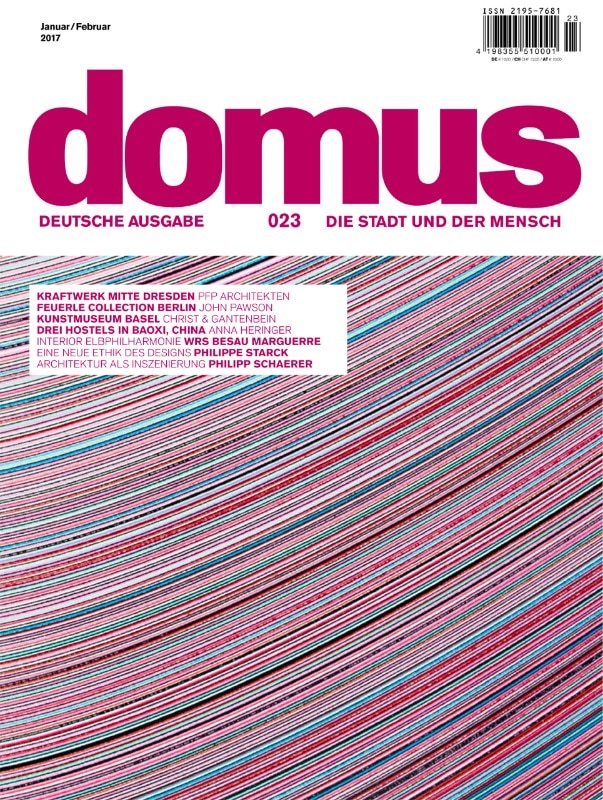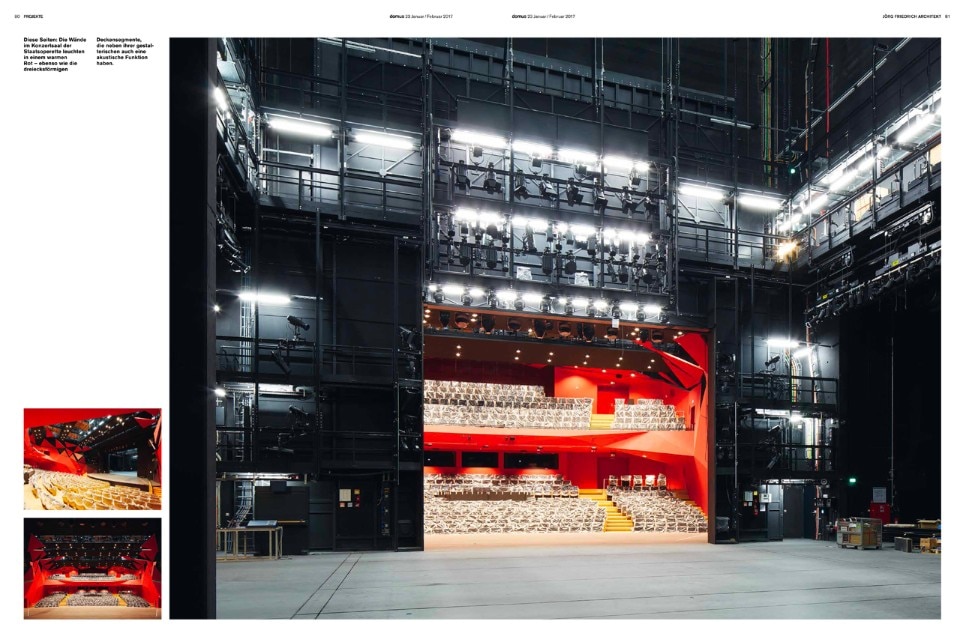After years of construction and conflict it has finally opened. And we were there. The first concerts will be held in January, but already streams of visitors are making their way to the public plaza between the quayside warehouse and the new building. To furnish this magnificent edifice fittingly, the architects of WRS in Hamburg were commissioned, and in turn engaged the services of the recently founded design studio Besau Marguerre. The result is an entirely coherent, appealing and contemporary concept that references the formal language of the building and harmoniously complements it – as you can see in this issue of German Domus.
A little later, in another place, a further building for culture was opened, far from the public stage but equally important for the development of the centre of its city: Kraftwerk Mitte (Central Power Station) in Dresden by pfp Architekten has space for no fewer than four theatre stages. At the same time, the project succeeds in revitalising an industrial area that lay waste for a long time. In Berlin a former telecommunications bunker was transformed by John Pawson and the practice Realarchitektur into an art venue that will accommodate the collection of Désiré Feuerle. In doing so Pawson, for whom the conversion is his first project in Berlin, endeavoured to change as little as possible of the fabric. A contribution to art was also made in Basel, where Christ & Gantenbein extended the Kunstmuseum (Art Museum) by confronting the existing historic museum with a new building, connecting the two underground and creating a space that visitors can experience.
With the renovation of Le Corbusier’s Cité de Refuge, this issue features a monument of Modernism where once again the cardinal question of the architect’s original intention is posed, and the question of the form in which such a building can be put to a contemporary use. One of the architects involved describes the difficulties that this project entailed.
Since the presidential elections, America and the situation there have dominated the headlines. For her project “Designing a better America”, a curator of the Cooper Hewitt Smithsonian Design Museum travelled to the margins of American society in search of projects that offer planning and specific solutions for people in need. And Domus author Michael Erlhoff has noticed that, for some years now, large companies have been buying up design studios in the USA. His comment piece explains what this development might mean for us.
To round off this issue, we take a look at the development of architecture towards digital self-representation – a computer-generated architecture that makes increasing use of the effect and production of seductive images.



